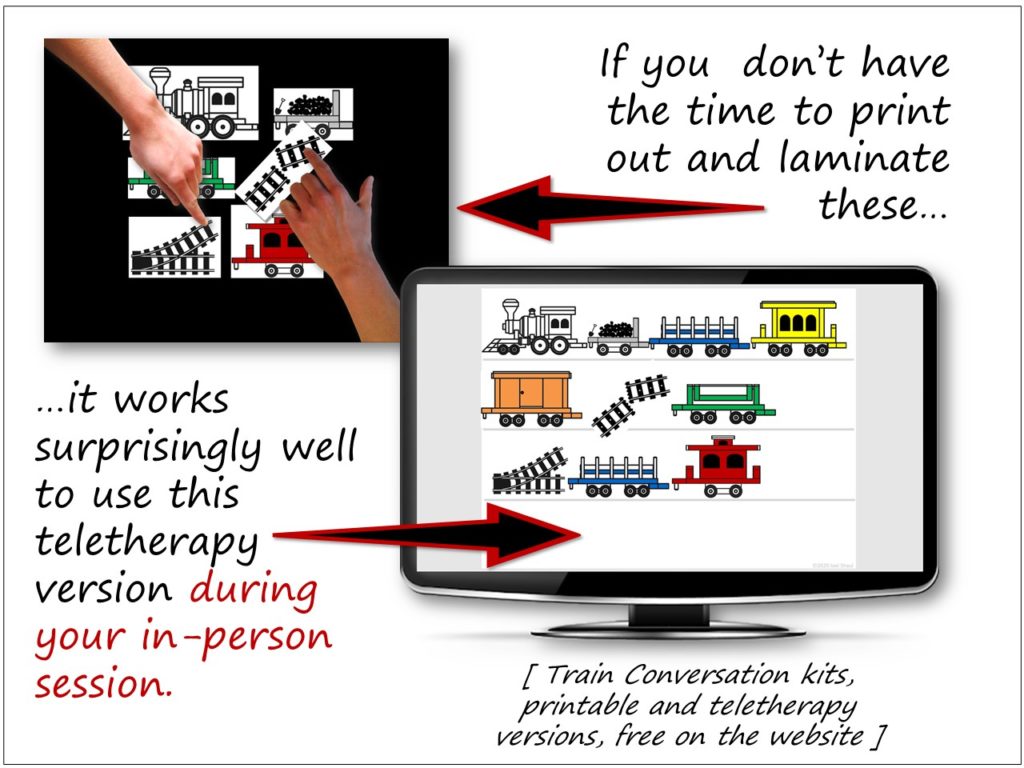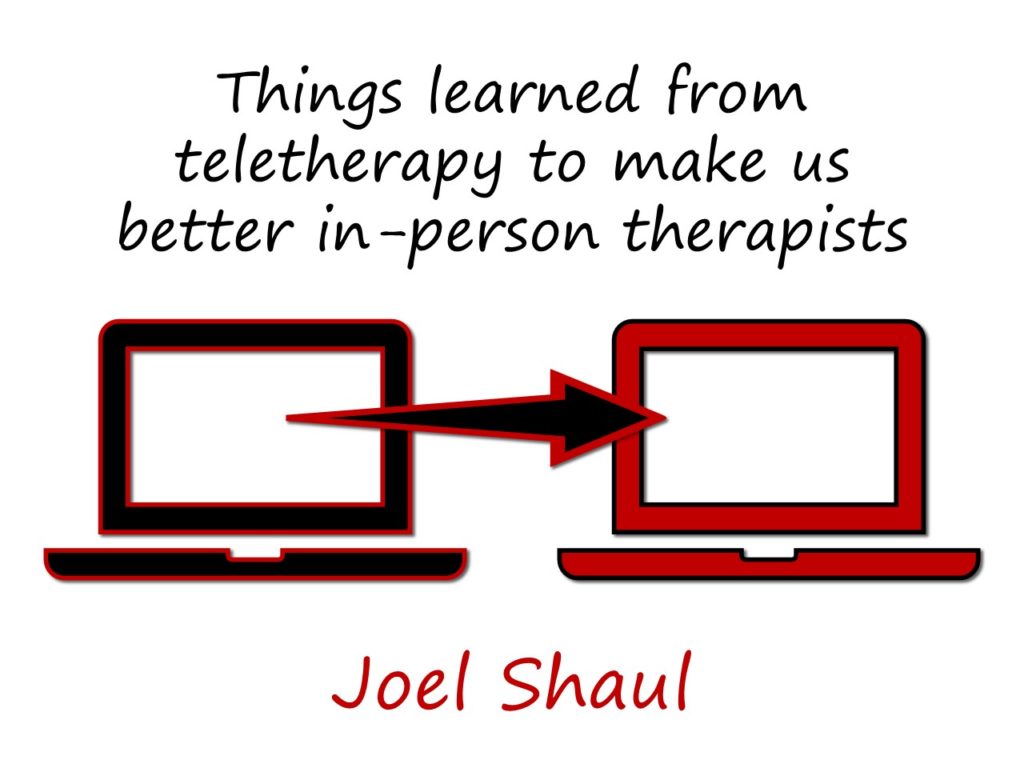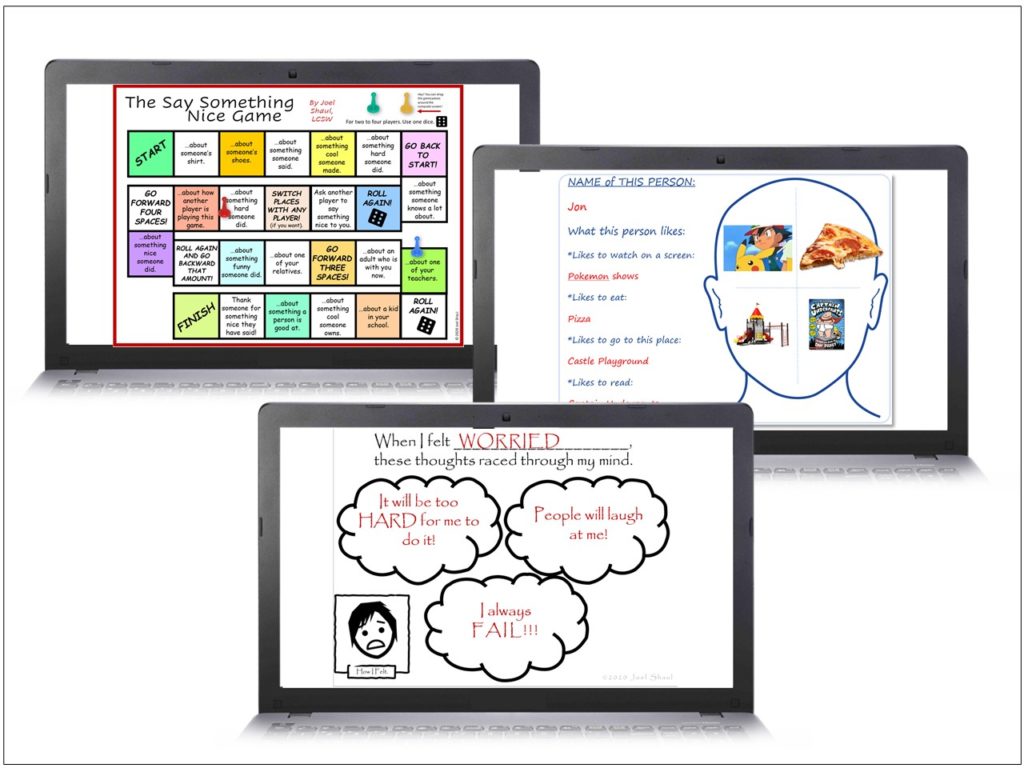September 2021
Many of us in education, mental health and speech spent hundreds of hours providing services remotely through our computers in 2000 and 2021.
At times, it certainly made us feel burnt out. Not to mention how it may have affected our students and clients.
Maybe you, like me, have also learned from working remotely and grown professionally because of it. Although I went through lots of frustration, I have to say it really had some very positive effects on my work. I started out with limited skills in teletherapy but then I got much better at it, to the point that a majority of the families I work with would have preferred continuing in remote services with me if insurance providers and regulatory agencies would have allowed it.
While doing all that therapy remotely through computer screens, I did a few things which have affected the way I now do my in-person mental health therapy and social skills training for young people with autism.
Some Ways Teletherapy Experience Can Make Us Better In-Person Therapists
Doing teletherapy, in a shared, virtual space instead of our own offices, can have the effect of breaking down some power dynamics that might not be beneficial to the needs of the child and the family. We – the professional, the child, the parent – work together in teletherapy in a space we jointly nurture and develop. It sometimes does not work so terrific, but when it does, it’s great.
Now that we are back in in-person sessions, providing services in our professional space, there are many things I can do to continue to work together with families in an egalitarian and collaborative manner. I can get out a drawing the child made in the past and stick it on the wall during the session. I can work more diligently with the parent as a therapeutic ally and perhaps have them in the therapy room for more of the session.
Engaging Visuals Are Just As Important with In-Person Therapy as in Teletherapy
The experience of doing teletherapy made it more clear than ever how important it is to use the clearest and most engaging visuals I can find. I noticed, in teletherapy with young people on the autism spectrum, that I needed to use colorful, engaging and strategic visuals on the shared screen as much as possible to supplement the verbal exchange and engage distractible eyes. Now that I am back to seeing children in person, I find I am using visuals – social skills games, picture cards, very simple worksheets – more than ever, since for so many months I had no other choice while carrying out teletherapy sessions with children on the autism spectrum.
In your own in-person teaching and therapy, you are invited to supplement your own repertoire of engaging visuals with whatever you might find on my website. My website’s download section has dozens of free printable games, pictures, coloring sheets and simple worksheets.
Screen-based Therapy Tools Can Work Great with In-Person Therapy Too
Many kids with ASD will lose focus and feel uncomfortable if obligate them to face us directly for too long. In teletherapy, I often spent more than half the session working with them while we looked together at a game, online worksheet or video. Although I used to use screen-based therapy tools often before the pandemic, I find I am employing them even more now after 18 months of teletherapy experience.
Some of these screen-based teletherapy resources I developed work even better than the printable resources I based them on. See this example below.

I hope you also have a successful resumption of your in-person work with children.





